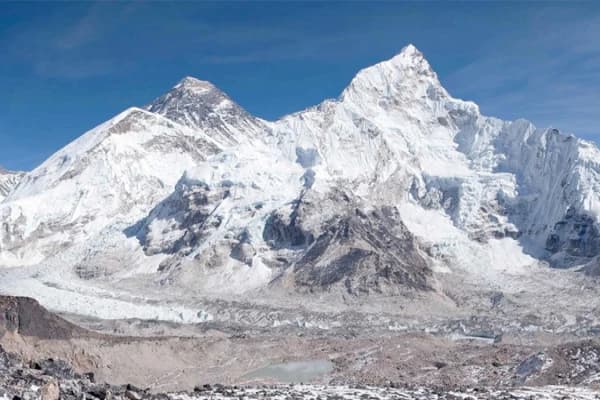Are you wondering what to pack for the Everest Base Camp Trek? Find the best and essential packing items for EBC trekking, along with some tips and tricks. Trekking in Nepal is an exhilarating activity that provides impressive scenery and life-changing moments. However, having the essential trekking gear is required for a successful and pleasurable hike. In addition to being more comfortable, having the right gear is essential for safety and readiness. This blog will provide an essential Everest Base Camp Trek packing list.
Overview of Everest Base Camp Trek
Everest Base Camp is a popular trekking destination in Nepal's Khumbu region. It serves as the base camp for climbers attempting to reach the summit of Mount Everest. The trek features stunning landscapes, demanding trails, and a rich cultural experience surrounded by the world's highest mountains. It's a journey that will inspire you with its natural beauty and the unique lifestyle of the Sherpa community. It takes trekkers through some of the most stunning scenery in the Himalayas.
A well-thought-out Everest Base Camp Packing List is crucial when preparing for the trek. Be prepared for challenging hiking days, high-altitude terrain, and steep inclines. Proper acclimatization is essential to prevent altitude sickness.
Clothing for trekking in Nepal
Layering is necessary if you consider what to pack for the Everest Base Camp trek. You need to pack warm clothes while trekking in Nepal.
Layering System
Base Layer:
- Moisture-wicking tops and bottoms (synthetic or wool).
- Thermal tops and bottoms are essential for cold weather conditions, particularly in colder regions of Nepal, where layering is essential. They help insulate the body and retain warmth effectively.
Insulation Layer:
- Fleece or down jackets for warmth.
- Insulated pants or tights to trap heat and provide extra warmth, particularly in colder climates.
Outer Layer:
- Wear a waterproof, windproof jacket and pants for comfort and protection against rain, snow, and wind.
Trekking Pants and Shorts:
- Quick-drying and comfortable for varying temperatures.
Footwear:
- Wear sturdy hiking boots with ankle support and waterproofing. Wear comfortable trekking socks (synthetic or wool) to prevent blisters and ensure your feet stay dry and comfortable.
The following includes the trekking gear checklist.
|
Clothing Item |
Quantity |
| Base Layer Tops | 2-3 |
| Base Layer Bottoms | 1-2 |
| Insulated Jacket | 1 |
| Fleece Jacket | 1 |
| Trekking Shirts | 2-3 |
| Trekking Pants | 2 |
| Waterproof Jacket | 1 |
| Waterproof Pants | 1 |
| Insulated Pants/Tights | 1 |
| Trekking Socks | 3-4 Pairs |
| Underwear | 4-5 Pairs |
| Gloves | 1 |
| Hat/Beanie | 1 |
| Sun Hat/Cap | 1 |
| Buff/Neck Gaiter1 | 1 |
| Sleepwear | 1 set |
Footwear for Trekking in Nepal
A decent pair of hiking boots Nepal offers, first and foremost, essential. Choose a boot that will keep your feet dry, has a firm grip, and gives your ankles enough support. This is particularly crucial if you intend to hike in higher altitudes, where there may be sharp and uneven terrain.
- Hiking Boots: Waterproof, supportive at the ankles (running shoes are not advised)
- Sandals or Running Shoes: At the teahouse in the mornings and nights (sandals or running shoes work just as well).
- Hiking Socks: Dry and comfy feet are the hallmark of high-quality hiking socks. Make sure you have adequate socks.
- Inner Socks: You could wear thin inner socks to support your hiking socks.
- Snowshoes: In the event of inclement weather and snowfall
When selecting hiking or trekking shoes, several key features should be considered:
- Weight: The weight of your footwear significantly affects your energy expenditure. Lighter boots reduce stumbling, muscle fatigue, and potential knee and hip flexor issues. Sturdier boots may provide added confidence without sacrificing performance for off-trail or heavy-pack adventures.
- Ankle Support: Many hikers choose boots because they provide ankle support. When laced tightly, boots covering more of the ankle can offer maximum support, improving stability on uneven ground.
- Comfort and Fit: Personal comfort is essential, as fit can vary widely among individuals. Lightweight, breathable, and waterproof materials are generally favored for hiking and trekking. Optimal comfort is achieved with flexible knitted uppers, supportive cushioning, 360-degree heel support, and memory foam, ensuring comfort over long distances and varied terrain.
- Waterproof vs. Non-waterproof boots: Waterproof boots are beneficial in snowy, rainy, and muddy conditions and at higher altitudes. However, they may lack breathability on hot days and can slowly dry once wet. Non-waterproof options are lighter, more breathable, and dry faster, making them suitable for day hikes and warmer climates.
Equipment
- Backpack:
A reliable and comfortable backpack is crucial for carrying all your gear and essentials on the trek. Choose one that is lightweight, waterproof, has a solid suspension system, and has a 30-40 liter capacity.
- Sleeping Bag:
Select a sleeping bag that matches the expected weather conditions for your trek. Evaluate the sleeping bag's portability and weight to ensure it fits well in your backpack without unnecessary bulk.
- Trekking Poles:
An adjustable and lightweight trekking pole is essential for stability and reducing strain.
Accessories
Headwear:
- Sun hat
- Sunglasses
- Headlamp
Gloves:
- Lightweight for warmth.
Sun Protection:
- High SPF sunscreen and lip balm.
- Sun hat
- Beanie
- Sunglasses with UV protection.
Gloves:
- Lightweight for warmth and dexterity.
Navigation and Safety Tools for Trekking in Nepal
- Map and Compass: Always keep a map and compass on you for dependable navigation, mainly when GPS reception is spotty or nonexistent.
- GPS Device or Smartphone with GPS App: Utilize a GPS device or a smartphone equipped with a GPS app for precise positioning and route tracking.
- Whistle: In an emergency, a whistle is an essential safety equipment for drawing attention to yourself or alerting others to your presence.
- Headlamp or Flashlight: Crucial for night navigation and emergencies, a headlamp or flashlight provides hands-free lighting.
- First Aid Kit: Pack a well-equipped kit with essential medical supplies and medications for trekking.
- Sunscreen and Lip Balm: Use a high-SPF sunscreen to shield your skin from harmful UV rays and lip balm to keep your lips hydrated.
- Insect Repellent: Use effective insect repellents to protect yourself from insect bites and related diseases.
Water Purification and Hydration
- Water bottles or Hydration Bladder: Bring sturdy, lightweight water bottles or a hydration bladder to stay hydrated during the hike.
- Water Filter or Purification Tablets: Water filters or purification tablets eliminate impurities and ensure everyone can access clean drinking water.
- Water Sterilization Devices: For added peace of mind, consider transportable water sterilization tools like UV sterilizers or water purifiers.
- Electrolyte Supplements: Carry electrolyte supplements or hydration powders to replenish electrolytes lost through perspiration.
Toiletries
- Biodegradable soap
- Toilet paper
- Hand sanitizer
- Toothbrush
- Toothpaste
- Hand sanitizer
- Wet wipes
- Tissue
- Quick-drying towels
Energy Snacks
- Lightweight and high-energy snacks like nuts, energy bars, and dried fruits.
Miscellaneous Gear
- Trekking Towel: Always carry a lightweight, fast-drying towel for personal hygiene and reviving wipes.
- Trekking Umbrella: Instead of rain gear, consider using a trekking umbrella, which offers protection and ventilation.
- Camera and photographic Gear: Use a camera and the required gear to capture the breathtaking scenery.
- Power Bank: Carrying a portable power bank or solar charger might help you keep your electronic gadgets charged.
- Stuff Sack for Clothes or Trekking Pillow: To improve your comfort while sleeping, use a stuff sack full of clothing or a small trekking pillow.
Documentation for Trekking in Nepal
- Passport and Visa: Verify that your passport is valid for at least six months after the date of entrance and that you have the required Nepal visa.
- Travelers' Insurance: Get all-inclusive travel insurance that includes coverage for hiking at high altitudes.
- Tickets and permissions: Get the required permissions for the trekking route you intend to follow.
To enter the Everest Base Camp, you must obtain a trekking permit, a Sagarmatha National Park permit, and a Trekking Information Management System (TIMS) card. You can obtain these permits in Kathmandu or Pokhara.
Ensure you have the best trekking gear Nepal offers for a safe, comfortable, and enjoyable adventure. Every item, from clothing to hygiene essentials and navigation tools, contributes significantly to your comfort and preparedness. Properly selecting and maintaining the right equipment allows you to embark on an unforgettable journey through Nepal's breathtaking landscapes while staying safe and comfortable. Therefore, ensure you have the Nepal trekking equipment to help you navigate the trails effectively, handle emergencies, and fully appreciate Nepal's stunning scenery.
What to wear trekking in Nepal
Layering
Layering is crucial to adapt to Nepal's varying temperatures throughout the day. During daytime hikes, comfortable shorts and a long-sleeved shirt are ideal. As temperatures drop in the evening, adding a sweater or jacket allows you to regulate your body heat easily by adding or removing layers.
Comfort
Trekking in Nepal involves extensive walking and climbing, so wearing clothes that provide comfort and mobility is essential. Choose fabrics like polyester or synthetic fibers that wick moisture away from your skin.
Rain Protection
Nepal's weather can be unpredictable, and rain showers can occur suddenly. Always carry rain gear such as an umbrella, raincoat, and waterproof boots to ensure you reach your destination dry and comfortable. A waterproof and windproof jacket is also advisable to protect against cold and damp conditions.
Cultural Considerations
Respect Nepali customs and values by dressing modestly. Take off your shoes before entering places of worship such as stupas, temples, and monasteries. Avoid drinking or smoking near these sacred sites.
These tips ensure you are appropriately dressed for trekking in Nepal, ensuring comfort, protection, and respect for local customs throughout your journey.
Avoid packing excessively
While preparing your essential trekking gear for Nepal, avoid overpacking. Keeping your backpack lightweight and including only the necessary items is crucial to a comfortable trekking experience. Excess weight can lead to fatigue and discomfort, particularly during long hours of trekking, potentially causing shoulder pain. Streamlining your gear selection with the right equipment ensures you can easily navigate Nepal's diverse terrain and enjoy your trekking adventure to the fullest.
Even if you think 15kg feels fine in Nepal, it won’t be fine at 4000m up a steep incline. It’s best to take only half of what you think you’ll need and try to be a true minimalist, even if it’s not in your nature. The extra luxuries might seem like a good idea, but your legs and back won’t thank you for them later.
Clothing tends to be the primary area where people overpack, so carefully reconsider each item before packing it into your backpack. Even if you hire a porter, it's wise to stick to essentials. Despite their incredible strength and resilience, porters are susceptible to exhaustion and altitude sickness like anyone else. It's important to respect their physical limits and avoid burdening them with unnecessary luxury items.
Tips for Best Trekking Gear Nepal
- Equipment from renowned brands costs the same as it does in your nation.
- If you choose to finish getting everything in Kathmandu, schedule this activity for at least a day.
- Renting the lost equipment is a better choice if you don't want to carry the equipment for home trekking or don't do this kind of thing very often.
- You can pay in US dollars, euros, or sterling lira at many stores in Kathmandu.
- If you're looking for inexpensive goods, you may find many, but be careful—the quality of knockoff stores varies greatly.
- Purchasing trekking gear in Kathmandu may feel overwhelming for first-time visitors.
To Sum Up
Selecting the right equipment for trekking in Nepal is essential for a fun and safe experience in the heart of the Himalayas. By emphasizing lightweight, strong, and suitable gear for the weather, trekkers may improve comfort, safety, and performance on the trails. Real Adventure offers the best Nepal tour services based on your experience level and degree of fitness and a personalized itinerary.
Real Adventure Nepal offers customizable packages catering to clients' needs and preferences. Customize your trip with Real Adventure Nepal Pvt. Ltd. to ensure a memorable, safe, and remarkable adventure. Their expertise, commitment to quality, and dedication to responsible tourism make them the ideal partner.
FAQs
Is trekking in Nepal suitable for beginners?
Trekking in Nepal can be suitable for beginners, especially on more accessible routes like Ghorepani Poon Hill or Langtang Valley. Being in good physical condition is essential, considering guided tours for safety and acclimatizing appropriately to higher altitudes.
What is the best time of year to trek in Nepal?
Trekking seasons in Nepal generally coincide with spring (March to May) and autumn (September to November). These periods offer stable weather, clear skies, and moderate temperatures, making them ideal for trekking.
Where can I buy the right trekking gear in Nepal?
Trekking gear can be found in Nepal at various places, such as Thamel in Kathmandu, local stores and markets in major cities like Pokhara, specialized outdoor gear shops, rental shops, and even online platforms offered by local stores.
What gear do I need for trekking in Nepal?
Essential items include sturdy hiking boots, layers of clothing for varying temperatures, a durable backpack, waterproof outerwear, trekking poles for stability, and a sleeping bag suitable for the climate. Additionally, navigation tools like a map and compass or GPS, a first aid kit, and personal hygiene items are crucial.
Can I hire a guide or porter for my trek?
Yes, you can hire experienced guides or porters for your trek in Nepal. Hiring a guide is highly recommended for navigating trails, understanding the local culture, and ensuring safety. Porters can help carry your gear, making your trek more comfortable.
Are there altitude-related risks during trekking in Nepal?
Yes, trekking in Nepal involves altitude changes, posing risks such as acute mountain sickness (AMS) or altitude sickness. Symptoms of AMS may include headache, nausea, dizziness, and fatigue. Acclimatizing properly is essential by ascending gradually, staying hydrated, and listening to your body.

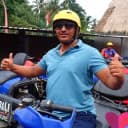

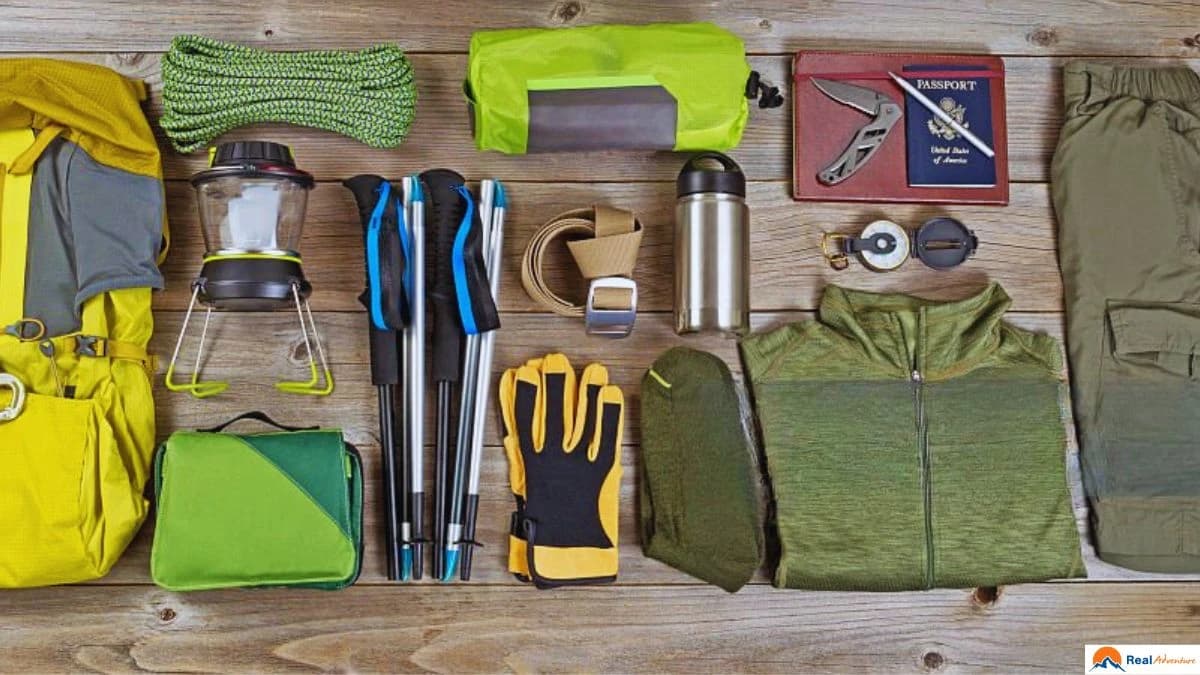
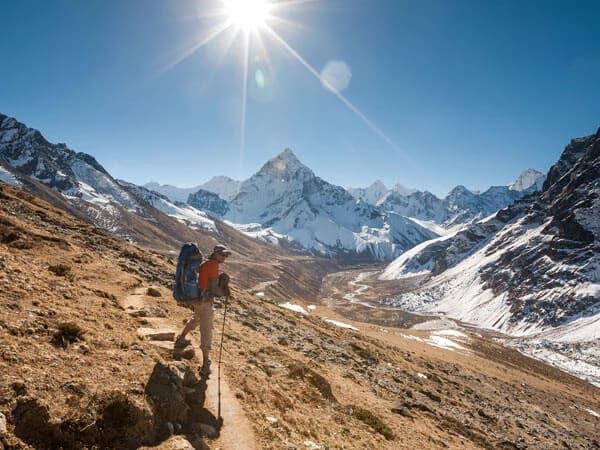
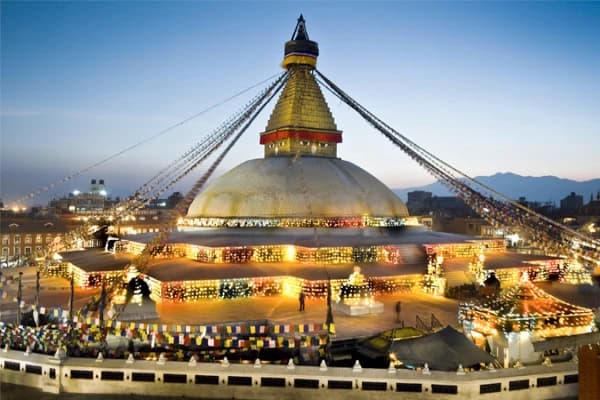
-(5).webp&w=1200&q=75&dpl=dpl_CtNAyRzUAwPdWKDCFxYk5p2VryPh)
